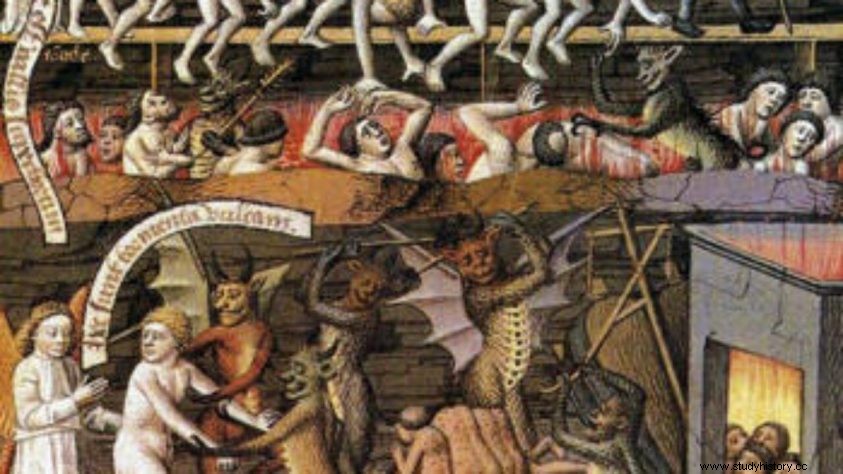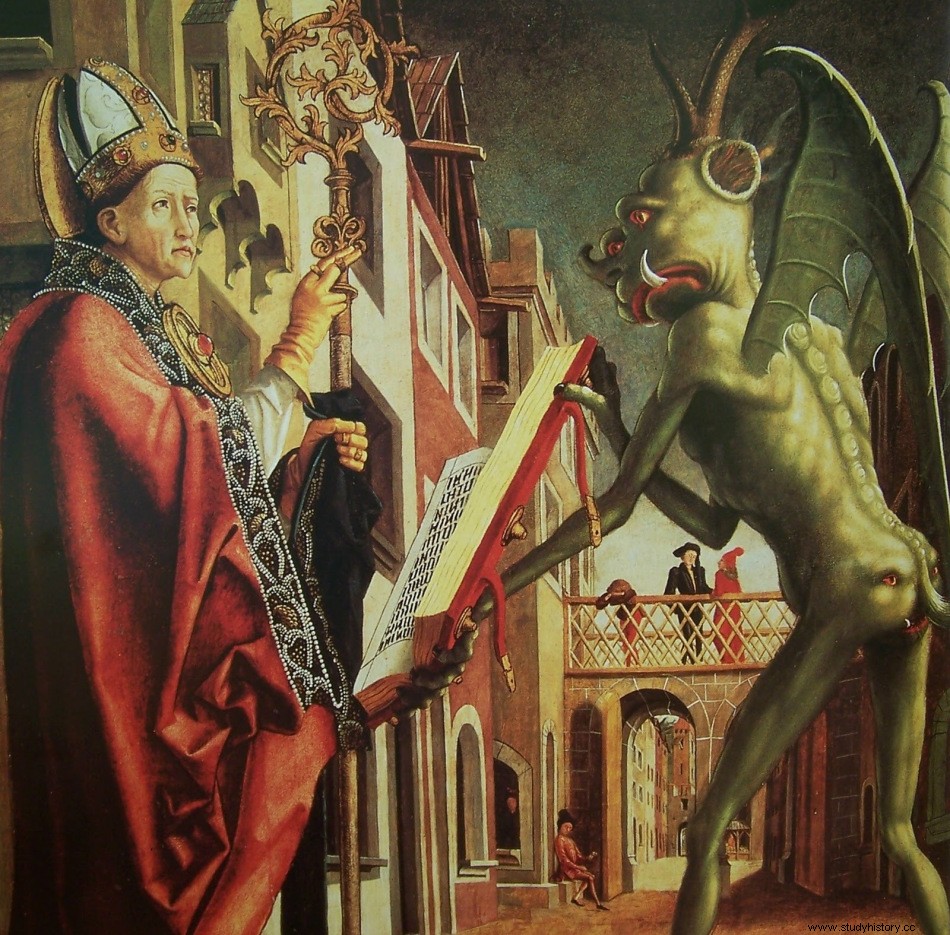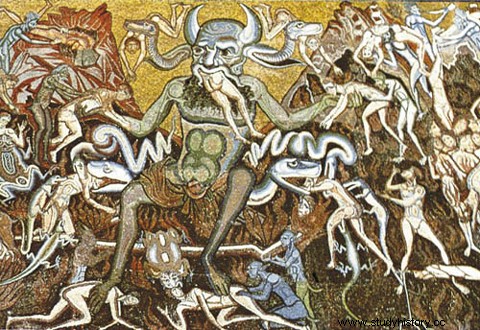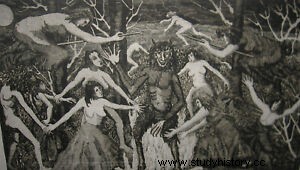
The imposition of Christianity as an official religion
Christianity, the undisputed cornerstone among the greatest monotheistic religions, has ancient origins and a long history characterized by struggles, rivalries, edicts and long councils that led it to represent a symbol and an ideology, as well as to embody the role of a of the most widespread and established religions in the world. But the journey was long.
His first steps towards a strong and complete affirmation date back to the fourth century AD, a historical period characterized by significant religious tensions.
With the " Edict of Milan " of 313 AD and the “ Ecumenical Council of Nicaea I “ from 325 AD ,
the emperor Constantine had undertaken a religious policy explicitly aimed at setting Christianity as the one and only practicable religion. All this was officially decreed by the " Edict of Thessalonica “ from 380 AD who, at the behest of Gratian, Valentinian and Theodosius I, had definitively sanctioned the role of Christianity as the official religion of the Roman Empire, thus imposing on it an iron and absolute fidelity.
These events represent crucial moments in the history of Christianity, which, starting from the 4th century AD. approximately, it was unquestionably recognized as a religion of universal level. This led it not only to be considered an official religion, but also a superior one, thus inevitably damaging numerous other religions over the centuries, such as for example in Judaism, starting from very ancient times. This concept of superiority was therefore fueled by a sort of contempt for any religion that was considered "other", and therefore different.
The idea of Christianity therefore grew stronger and stronger, supported by equally powerful clerical institutions, until it reached an apex of ideologies that have its roots in the high and (especially) low medieval period.
The power of the medieval church and the combination of good and evil
For centuries, the idea of the Middle Ages has been strongly associated with a collective imagination characterized by a rigid religious ambivalence based on the concept of good and bad .
We have previously seen how Christianity had begun to establish itself in a context of religious tensions a few years after the fall of the Western Roman Empire.
Therefore, with the beginning of the period that today we define "High Middle Ages", it found the "road smoothed" to be able to establish itself definitively as the pivotal religion of the entire medieval world, bringing with it a vast series of concepts that would have had a centuries-old fortune in the world of monotheistic religions. At the base of these doctrines there was the well-known contrasting combination of good and evil, a rigid ambivalence set and controlled by Christianity in the most ironclad possible way.
Medieval society was also founded on two pivotal models:politics and religion and, on most occasions, the latter could influence, and indeed master without too much difficulty, the former. Suffice it to say that the entire ecclesiastical hierarchy was entirely founded on the enormous power exercised by the papacy, which, despite not being in possession of a personal army and not having direct access to the executive power available to medieval kings, possessed the full control over the monarchy and the almost immediate possibility of removing the monarch at will; therefore such privileges would not have been necessary to him at all to exercise the full religious power of which he was actually the holder. Furthermore, the Church, while representing a small percentage in terms of interested men, owned almost a third of all the lands of the kingdom, without counting taxes, offers, sales of indulgences and maximum offices and, of course, the complete exemption from any type of taxation.
At the end of these reflections it is therefore almost obvious to affirm that it was the Church, on the interpretative basis of Catholic doctrines, that decreed what "good" represented and what "evil" represented.
It is a typically medieval human trait to be openly inspired by the morality pursued by Jesus, who not only represents a key historical figure for the reading of the Christian religion, but at the same time embodies a real body of spiritual laws to be pursued. and to emulate with extreme care and attention, and on which to base one's existence which, as Catholic doctrine teaches, must be directed solely to the good. In short, Jesus is in all respects a model to follow, a "reservoir" of ethics and morals, and finally a solid basis on which to set up the most upright human behavior. And it is precisely from these concepts that the real idea of "good" is born, understood as a principle closely linked to everything that the Church decreed, and indeed imposed, almost as a "law of righteousness".
It is also obvious to affirm that, where the Church and Christian principles strenuously imposed themselves as defenders of honesty and virtue, they decreed themselves equally fiercely as persecutors of everything that went against these doctrines, thus fomenting the concept of "evil".
However, it is necessary to underline how medieval society was set up, and to highlight how much this historical period was permeated with fear and, above all, with superstition. The two elements in fact went hand in hand in a cultural context in which any error and deviation from what was believed to be the so-called "good" was severely punished; and it is by no means just corporal punishment. Fear was in fact too
firmly connected to the doctrines imposed by the Catholic Church, and the very idea of moving away from these principles, thus approaching the much feared concept of "evil", made the vast majority of the medieval population so religious that it often poured into superstition; not to mention the ignorance and illiteracy that crowded cities and countryside, which spread fear of evil even more, fomenting a tacit acceptance of everything that the Church imposed in an almost dictatorial way.
Jesus, or the good; Lucifer, or evil
It is also necessary to highlight how the concept of good and evil was not only associated with abstract ideals, but also went to materialize, or rather to personify itself in very specific characters. In fact, we can speak of "personification" as a typically medieval phenomenon due to the marked attachment to everything that could be concretely explained, which is why the figure of Jesus has been associated with the concept of "good" by the Church , which was to be recognized as the main model of inspiration, a real moral and spiritual example on which to base one's behavior and one's being.
Although it is obvious to say, the conception of good is obviously also outlined by the figure of God , who is indeed the undisputed protagonist, bringing with him the biblical examples of forgiveness, mercy and benevolence. However, the character of Jesus represents a historically established figure and it is therefore much easier to associate with him a real personification and concreteness of the concept of "good". But what will connote the concept of "evil" instead?
Always starting from a purely religious assumption, the Church refers to a very well-known event, despite the fact that it is never mentioned either by the " Old Testament “, Nor from the“ New “; or the fall of Lucifer in the underworld. Lucifer, a name with a highly significant etymology, deriving from the Latin " lux ”-“ light ”and“ ferre " - "bring". In fact, he was nicknamed "the bearer of light" and played one of the main roles among the angels of God; each angel had in fact a particular very specific function assigned to him directly by God and it would therefore not be an exaggeration to say that he was almost his favorite.
However, we know from the prophet Isaiah that Lucifer possessed an extremely proud soul, so much so that he even dared to challenge God with a host of supporting angels to get to be his equal in the Kingdom of Heaven, if not to replace him definitively. The outcome of this rebellion was a failure and Lucifer, defeated by the Archangel Michael sent by God, was thrown down from heaven, going to stick in the center of the Earth, or in the so-called "underworld", which from that moment would have been inhabited by him as sovereign and all other rebels. However, it is necessary to specify how many interpretations regarding this myth are many, and sometimes even discordant, not guaranteeing a univocal and officially recognized version.
Hell and heaven in the medieval imagination
With the emergence of the figure of Lucifer as the main opponent of God, two fundamental biblical concepts are born in parallel:that of "hell" and that of "devil", both closely linked to the more general and profound ideal of evil, understood as a purely abstract concept.
To concretely explain the existence of a hellish place as opposed to paradise (delineated by joy and bliss), we therefore rely on the story of Lucifer, who, falling from the sky, would go to stick in the center of the Earth, thus giving rise to a place characterized by sin (due to the gesture made by the rebellious angel) and inhabited by damned souls. This ideal of hell would have settled within Christian doctrines so deeply that it is still relevant today, if not very often credible. It is therefore not an ancient phenomenon limited to a given place, but a concept that has had the opportunity to take root in various places over the centuries, finding enormous success with Dante and with the medieval era. In fact, in the Middle Ages the fear of hell was so widespread and rooted that the phenomenon of indulgences, a payment in money to obtain a partial or complete remission from sins for oneself or for one's loved ones, reached such high levels as to be one of the greatest income for the Church, like taxes and donations; a real source of livelihood.
As previously mentioned, Dante's contribution was fundamental not only to outline the image of heaven and hell that we still know today, but also that of the greatest protagonists who reign over these places. And just as God occupies a primary and undisputed place in the "Empyrean Heaven" of paradise, Lucifer would play a parallel role in hell, as lord of evil and damned souls.
Satan or Lucifer?
The term "devil" commonly used today would derive from the Greek verb " diàballo ". This term is not accidental and is obtained from the particle “ dià ”-“ through ”and from the verb“ ballo "-" throw ", and would therefore indicate the one who divides and separates, precisely a slanderer.
But before embarking on the actual discussion about the figure of the devil in the medieval context, it is necessary to specify that, although today the appellation referred to is perfectly interchangeable, its lexical origins are very distinct.
Lucifer in fact it would represent a character closely linked to the figure of God, of angels and rebellious demons (we could almost define him biblical, despite the fact that the Bible does not mention his story); he is therefore directly connected to the concept of human sin and temptation, typically biblical and Christian elements. Lucifer therefore embodies a model of deviation, a total decline that leads to a moral collapse with no possibility of redemption (we must not forget that he was originally an angel).
The figure of Satan , or Beelzebub (Beelzebub in Italian), would instead indicate a real demon, a spiritual or supernatural entity, a satanic figure exclusively endowed with evil instincts and with the sole purpose of misleading and corrupting the human soul. Satan is evil, destructive, slanderer, and unlike Lucifer he does not present any angelic references. His demonic connotation should even be traced back to the many polytheistic religions of antiquity, in which the presence of the figure of an antagonist par excellence was customary. Suffice it to say that in ancient Egypt the god Seth embodied the true image of evil, and this about 3,000 years before the birth of Christ.
Therefore, although the figure of Lucifer is strongly connoted in the Christian imagination to the point of being biblical and like God as his main enemy and opponent, the image of Satan should instead be traced back to a polytheistic pagan tradition established and rooted by thousands of years and not yet completely supplanted by Christianity, as it might instead be believed.
The devil in art and in the medieval world
Starting from the early Middle Ages, the devil assumed a dominant role in the Christian religious world, so much so that it influenced art, literature and even the thought and mentality of medieval society. To be permeated with beliefs and superstitions were inevitably the iconography and the collective imagination, closely linked to the Catholic component based on the much discussed combination of good and evil.
Therefore, if on the one hand the figure of the devil represented a constant demonic presence in the life of man, a clear spiritual example of a "drive to sin", on the other hand it embodied a strong human need, that is to give a concrete image to everything what constitutes a mystery to the eye, thus giving concreteness and materiality to this figure; and it was precisely art that represented the main tool for the embodiment of ideas (over the centuries, the imagination has never met human expectations). Thus it was that, as happened with the figure of God and the angels, the devil also tried to give a worthy and concrete artistic representation that would give men a real image to turn to.
Satan is a distressing presence in the everyday life of the Middle Ages; he is present on the facades of churches, in the frescoes, on the capitals and even in the mosaics and sculptures of the court. The medieval period thus begins to give shape to the greatest fear that has ever haunted the Christian community:the idea of hell and sin. The infernal artistic representations are numerically almost equal to the celestial ones and, like the latter, do not leave out any detail. Satan is always the undisputed protagonist and, drawing frequently also from pagan representations, the details of him are of a raw and impressive realism. These are often religious works, depicting for example the Last Judgment or the Descent into Hell, and no detail (even the most grim and bloody) was spared.
The figure of him has been a very frequent source of inspiration for sculptors, painters and artists of all kinds, who have tried to portray this "medieval obsession" in the most varied ways possible. The devil is feral, bestial, has nothing to do with the angelic figure of Christ, and representing his main antagonist on the biblical level, so it had to be also from a physical point of view. He often has nothing human, not even the slightest semblance; he may have horns, claws, sharp teeth and a serpentine tail. He is also often associated with animals such as the snake, which embodies temptation (from the well-known biblical story of Adam and Eve), the black cat (one of the satanic animals most associated with witchcraft) and the goat (linked to the biblical episode of the goat expiatory, upon which all the sins of the people of Israel are poured out).

But it was not only his bestial aspect that was depicted, but also his diabolical temperament and his perfidious and sadistic nature. The devil in fact tortures and torments the sinners who find themselves in the underworld with the worst torments that can be imagined, and the art in this does not leave out any minimum detail, as well as masterfully depicts the angelic figures of the blessed who enjoy the pleasures of heaven.

In an age when the vast majority of the population could neither read nor write, art found itself playing a key function for medieval society, and all the warnings that sinners could have read in the Bible or in any volume. religious, were explicitly expressed through artistic works; and if the depictions of heaven would have easily led to the right path, just as effectively would the infernal depictions have dissuaded from sin and temptation. It is therefore needless to say how much the Church exploited the "satanic" artistic representation to its own advantage, as a real means of dissuasion and an instrument of persuasion towards the Catholic faith.
The reaction of the Church
In parallel to such a rapid and profitable diffusion of the figure of the devil in the medieval collective imagination, the reaction of the Church in relation to what Lucifer actually represented for the community was not long in coming.
Thus a strong gap emerges between those who were considered "good citizens", loyal to duty and righteous practicing Catholics, and all those who, going against the ideal of the "honest populace", inevitably clashed with Christian doctrine by yielding to the so-called "temptations of the devil". Therefore, if on the one hand the Church conferred a sacred image of the only possible right way forward, on the other hand every deviation represented a step forward towards Satan and sin.
And this conception reached ever more extreme levels, especially starting from the Late Middle Ages.
In fact, all those who could in some way disturb the perfect aura that hovered over the medieval Christian community were associated with the figure of Satan, thus disturbing the public quiet and tainting the strong religiosity that permeated it. All those who practiced a cult other than Christianity were therefore considered devil worshipers, and the Middle Ages are full of popular beliefs that grew hidden from the eyes of the Church. An example of this is given by the veneration of the "Holy Greyhound", a dog who saved a lord's child from a viper, only to be killed by his master, who believed that he was tearing the baby to pieces. Over time, the story spread to the villages surrounding the castle where this event had taken place, and the figure of the dog was increasingly assimilated to that of a real saint, seen as a martyr and savior. The Church was strenuously opposed and worship (considered as an idolatry) was prohibited, but resisted the continuous attempts of suppression for centuries. And this is only one of the many cases; these beliefs were mainly associated with paganism, which was itself the cult associated par excellence with seduction and the devil.
Another easy target for the Church was women . In a highly misogynistic society like the medieval one it was common to turn hatred and fury towards the literally weaker sex and, especially towards the end of the Late Middle Ages, the figure of the "witch" was born, understood as a woman extremely devoted to the devil and a practitioner of black magic. With increasing suspicion of everything that did not faithfully refer to Catholic doctrine, fear of all those practices that were not sufficiently known, often practiced by women, also inevitably increased. In fact, the accused were midwives or healers, who used natural products that could often refer to magical practices; however, prostitutes, beggars or lepers, or all those women who did not respond correctly to the rigid medieval ideal of "Christian woman", were also to end up in the crosshairs of the Church, thus finding themselves among the weakest categories of the population. But the procedure was always the same and among the major faults attributed to women was the accusation of practicing "sabbaths", typical blasphemous rituals in which witches would gather at night to practice satanic orgies with the devil.

The figure of Eve, protagonist of original sin, also contributed in a very significant way to outline the woman as a bearer of sin, and once again it is Christianity, accompanied by the famous stories of the Bible, to dictate the law on what was right and what was not. . It was therefore inevitable that the Church should focus its attention above all on women, since she who had eaten the forbidden fruit, once again under the temptation of the devil in the form of a snake, was precisely of that sex. It was therefore common practice to associate femininity with sin, but above all with seduction and temptation, characteristics peculiar to Satan above all; why witches were considered the main servants and worshipers of Lucifer.
The Church was so involved in the infamous "witch hunt" that it established a real holy court:the " Holy Inquisition ", With the one and only task of brutally repressing any possible obstacle to Catholic doctrine and, obviously, any element that could represent a danger to the power of the Church as a religious institution.
But in the crosshairs of the "Holy Inquisition" not only women ended up, although they had to endure the vast majority of the accusations. Many men were burned at the stake for the same accusation of witchcraft aimed at women, but when fear and suspicion became unbearable, multiple accusations were completely unfounded, the result of hatred and personal revenge. In fact, a simple hatred towards someone was enough for those who wanted to be accused to be directly condemned as a worshiper of Satan, sometimes even without trial. But gender was not the main connotation, since basically the accusation was always the same.
All this to underline how every accusation, whether it was an anomalous cult, a suspicion of witchcraft or a simple revenge, was constantly linked to the fear of the presence of the devil in everyday life. A fear founded on suspicion and fomented almost exclusively by the Catholic Church.
The figure of the devil today
Although today magic and superstition have been overcome and supplanted by the constant growth of scientific progress, contemporaneity continues to be permeated by what characterized the medieval religious conception associated with evil almost 700 years ago. In fact, the churches continue to be covered with frescoes relating to a symbolism closely associated with the figure of Lucifer or original sin. Furthermore, in schools and, more generally, at the level of basic education, the study of Dante is inevitable, who with his accurate description of hell, heaven and purgatory has enormously conditioned the ancient and modern vision of the concept of evil and good. . Filmography then, one of the elements most associated with contemporaneity, is full of direct or indirect satanic references, such as sects, exorcisms and representations of the devil of all kinds; all concepts which, although they seem fully inserted into the contemporary world, instead date back to very ancient origins.
Even today, in fact, the figure of the devil is inevitably associated with what was the medieval conception of evil, and in this religion has played a primary and fundamental role.
In a secular or religious context, if you prefer, it is therefore useless to try to separate the idea we have today about Satan, from what the Church and Catholicism have involuntarily (but much more often voluntarily) transmitted over the centuries. In fact, even today it is almost impossible to mention the figure of the devil with all its implications without approaching religion, with thought or through direct references. All this because, as we have seen previously, just as the figure of Satan is strongly influenced by characteristics and traits relating to the pagan world, our contemporaneity is impregnated with Christian concepts that refer to an ancient tradition, thus transmitting us a lively popular culture. linked to the figure of the so-called "devil" who has much more behind him than what we can see at first glance through frescoes, films, books or simple stories.
